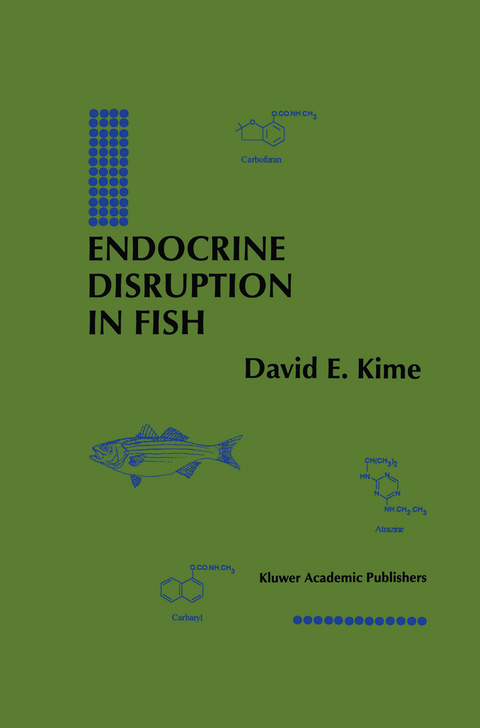
Endocrine Disruption in Fish
Springer-Verlag New York Inc.
978-1-4613-7243-1 (ISBN)
1. Introduction.- 1.1 Environmental Pollution.- 1.2 Endocrine Disruption.- 1.3 The Need for Biomonitors.- 1.4 Why Use Fish as Biomonitors?.- 2. Sources of Aquatic Pollution.- 2.1 The Origin of Pollutants.- 2.2 Types of Pollutant.- 3. Bioconcentration in Fish Tissue.- 3.1 Introduction.- 3.2 Tissue Distribution.- 3.3 Factors Affecting Uptake of Pollutants By Fish.- 3.4 Uptake of Pollutants into Eggs and Larvae.- 3.5 Tissue Concentrations as a Bioindicator of Aquatic Pollution.- 4. Introduction to Fish Reproduction.- 4.1 Introduction.- 4.2 Seasonal Cues for Reproduction.- 4.3 The Teleost Endocrine System.- 4.4 Seasonal Changes in Hormones and Gonads.- 4.5 Courtship Behaviour and Spawning.- 4.6 Reproductive Strategies.- 4.7 Fecundity and Fertility.- 4.8 Sex Determination and Reversal.- 4.9 Impact of Pollutants.- 4.10 Mechanisms of Action.- 4.11 Experimental Approaches.- 5. Disruption of Hypothalamic and Pituitary Function.- 5.1 The Hypothalamic-Pituitary System in Fish.- 5.2 Effects of Pollutants on the Hypothalamus.- 5.3 Effects of Pollutants on the Pituitary.- 5.4 Conclusions.- 6. Disruption of Male Reproductive Function.- 6.1 Introduction.- 6.2 Effects on Testicular Morphology.- 6.3 Effects on Testicular Hormone Production.- 6.4 Effects on Sperm Viability.- 6.5 Other Effects on the Male.- 6.6 Conclusions.- 7. Disruption of Female Reproductive Function.- 7.1 Introduction.- 7.2 Effects on Ovarian Morphology.- 7.3 Effects on Steroidogenesis.- 7.4 Other Biochemical Indicators of Ovarian Activity.- 7.5 Effects on Ovulation and Spawning.- 7.6 Effects on Egg Numbers and Viability.- 7.7 Effects of Parental Exposure on Viability of Offspring.- 7.8 Conclusions.- 8. Disruption in Eggs, Embryos, Larvae and Juvenile Fish.- 8.1 Introduction.- 8.2 Exposure of Eggs and Embryos.- 8.3 Exposure of Larval and Juvenile Fish.- 8.4 Conclusions.- 9. Disruption of Liver Function.- 9.1 Introduction.- 9.2 Morphological Effects.- 9.3 Effects on Hepatic Enzymes and Proteins.- 9.4 Vitellogenesis.- 9.5 Conclusions.- 10. Disruption of Thyroid and Interrenal Function.- 10.1 The Endocrinology of the Thyroid and Interrenal Glands.- 10.2 Effects on the Thyroid.- 10.3 Growth.- 10.4 The Stress Response.- 10.5 Osmoregulation.- 10.6 The Immune System and Disease.- 10.7 Conclusions.- 11. The Fish-Wildlife-Human Connection.- 11.1 Introduction.- 11.2 Health Hazards From Dietary Fish.- 11.3 Hazards to Human Populations.- 11.4 Testing for Endocrine Modulators.- 11.5 Conclusion.- References.- Species Key.
| Zusatzinfo | XV, 396 p. |
|---|---|
| Verlagsort | New York, NY |
| Sprache | englisch |
| Maße | 155 x 235 mm |
| Themenwelt | Studium ► Querschnittsbereiche ► Prävention / Gesundheitsförderung |
| Naturwissenschaften ► Biologie ► Ökologie / Naturschutz | |
| Technik ► Umwelttechnik / Biotechnologie | |
| Veterinärmedizin | |
| ISBN-10 | 1-4613-7243-7 / 1461372437 |
| ISBN-13 | 978-1-4613-7243-1 / 9781461372431 |
| Zustand | Neuware |
| Informationen gemäß Produktsicherheitsverordnung (GPSR) | |
| Haben Sie eine Frage zum Produkt? |
aus dem Bereich


